The cooler breeze and the longer nights announce the arrival of winter. If you need a little more heat in your house, what could be better than turning on your gas fireplace? You might be asking if you can burn wood in a gas fireplace. We've sought the answer from experts to get you ready for winter!
A gas fireplace cannot be used to burn wood. The heat supplied by burning wood is not supported by gas fireplaces. When you burn wood in it, you run the risk of:
- A buildup of soot and heavy smoke that could be harmful to your home and your health.
- Damaged gas lines causing leaks and home fires.
Many manufacturers and fireplace owners suggest avoiding burning firewood in a gas fireplace unless you have a gas starter fireplace. Check to see if you have a gas starter or a gas fireplace before lighting anything in your fireplace!
Stay with us as we take a closer look at gas and gas starter fireplaces. We'll discuss the implications each has for burning wood or other flammable objects inside. Take note, any use of a fireplace comes along with safety precautions! So before you light-up and snuggle in for the winter, please continue reading.
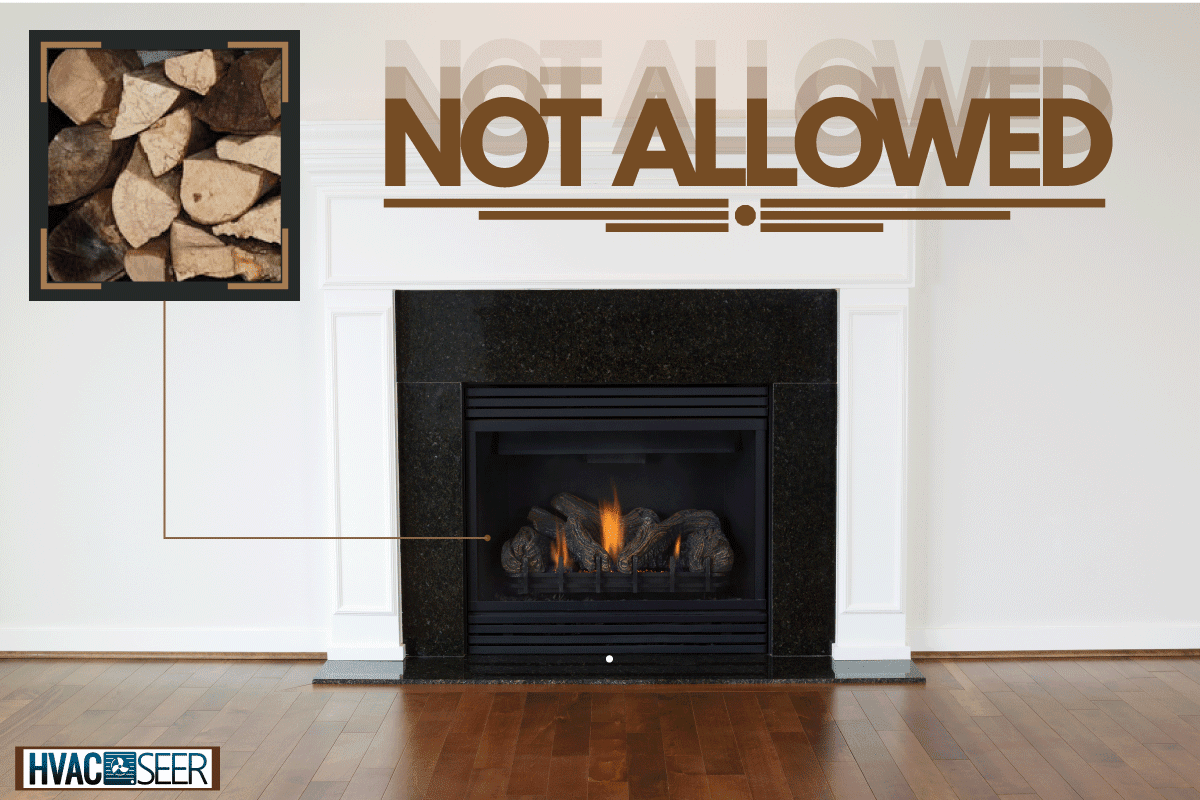
Burning in Gas Vs. Gas Starter Fireplaces
Firewood can be burned in a gas starter fireplace but not in a gas fireplace. Gas starters only need gas to ignite a fire, and once the wood is burning, it may be switched off.
A gas fireplace, on the other hand, has an in-built pilot light that starts the fire and burns gas continually to keep the room warm. It is best to consult an expert to check which fireplace type is installed in your home. If you have a gas fireplace, you should never burn wood in it since it poses health and safety dangers.
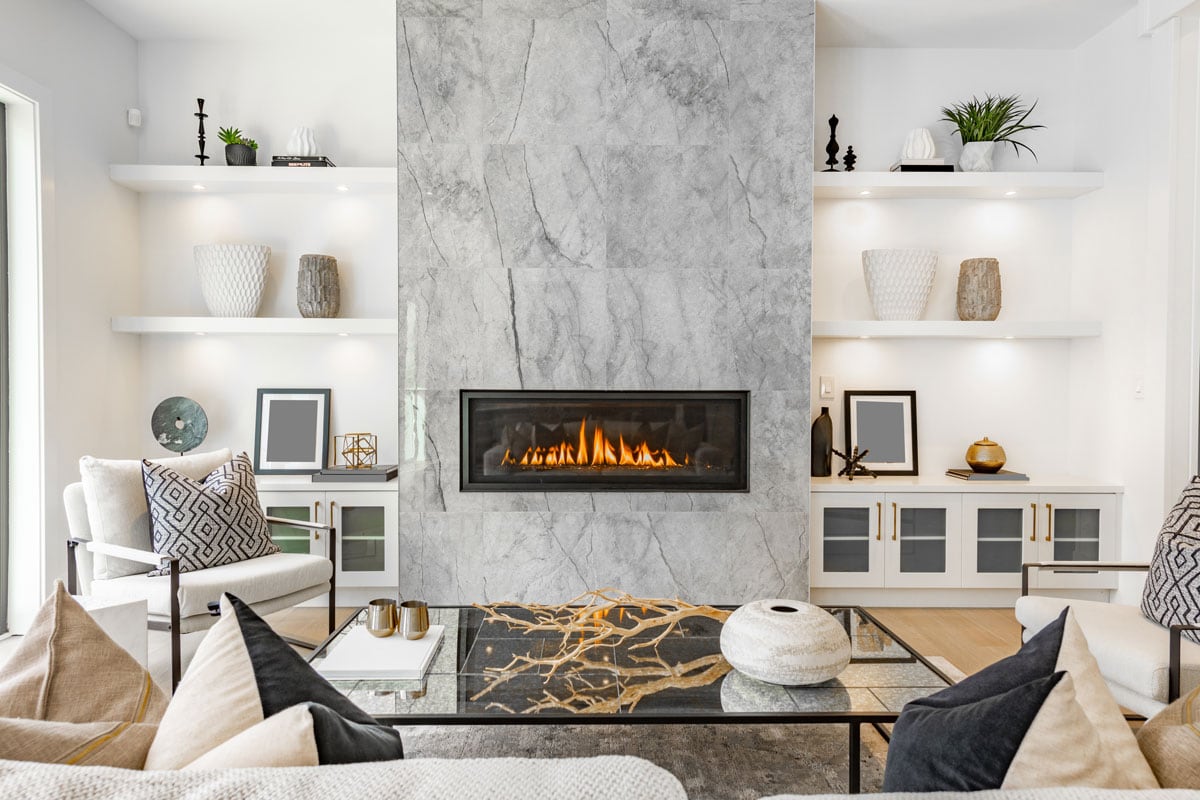
Health Effects of Soot Buildup
You may have considered the low amount of soot produced by a gas fireplace when making your purchase, but burning firewood in your gas fireplace defeats that objective. Wood burns with various flame intensities, producing thick smoke and a lot of soot.
The American Lung Association emphasizes the negative health implications of particle pollution. Excessive particle exposure and inhalation of these particles, such as soot, can raise the risk of heart disease, lung cancer, and asthma attacks, as well as interfere with lung growth and development.
Soot contains corrosive qualities and, if left on the surface for a long time, can cause lasting harm to your home and furniture. It has the potential to crack concrete walls and corrode metals, particularly metal gas pipes, posing additional safety risks.
Burning Wood in Gas Fireplace Can Case Potential Gas Leaks
Gas fireplaces are made to burn fuel rather than wood. To light a gas fireplace more efficiently, a pilot light is installed inside. Using wood as a heat source could cause gas lines or pipelines to be damaged, resulting in a gas leak. Long-term exposure to gas leaks can cause carbon monoxide poisoning that can affect both you and your pets.
A house fire is the most fatal and catastrophic consequence of a gas leak. Even a little gas leak or electrical spark can create an explosion in your home, resulting in moderate or substantial damage to your property, or worse, the loss of your entire home.
Which is better: gas or wood-burning fireplace?
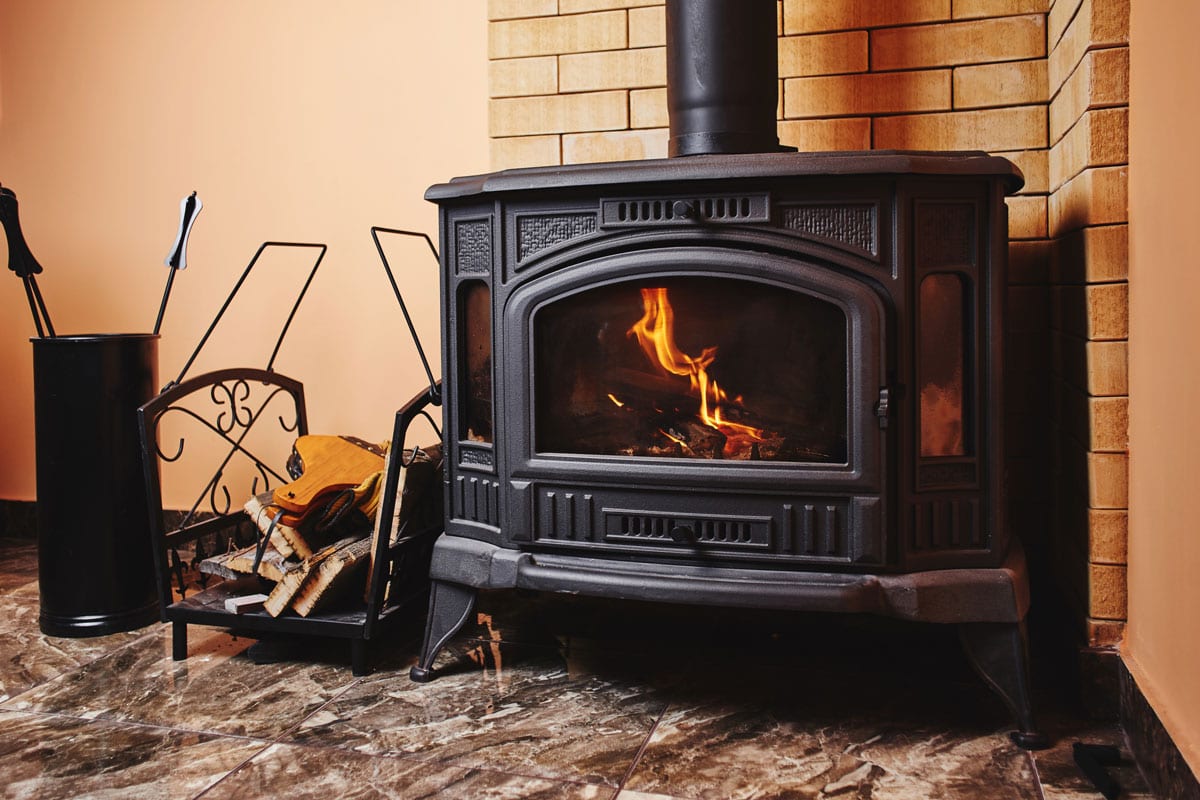
You might be considering a fireplace as a home heating system, but you seek another option. In terms of aesthetics, efficiency, and maintenance, you might wish to compare the benefits and drawbacks of gas versus wood-burning fireplaces.
- In terms of aesthetics, a wood-burning fireplace is the greatest option if you prefer a traditional rather than a modern fireplace style.
- Their heating capability varies as well. Although gas fireplaces produce less heat than wood fires, the heat produced by the former is more consistent.
When compared to wood-burning fireplaces, which require frequent cleaning, a gas fireplace is easier to maintain because it creates a minimal amount of soot, if any at all.
Can you convert a gas fireplace to wood burning?
This is dependent on whether you built your fireplace to burn wood from the start with a good and safe venting mechanism. There are gas fireplaces that are only installed into existing masonry, originally constructed as a wood-burning fireplace. In this situation, you can easily remove the insert to return the fireplace to its original state.
If you are unsure about the structure of your fireplace, it is best to seek the advice of a fireplace and venting system expert.
What can you burn in a gas fireplace?
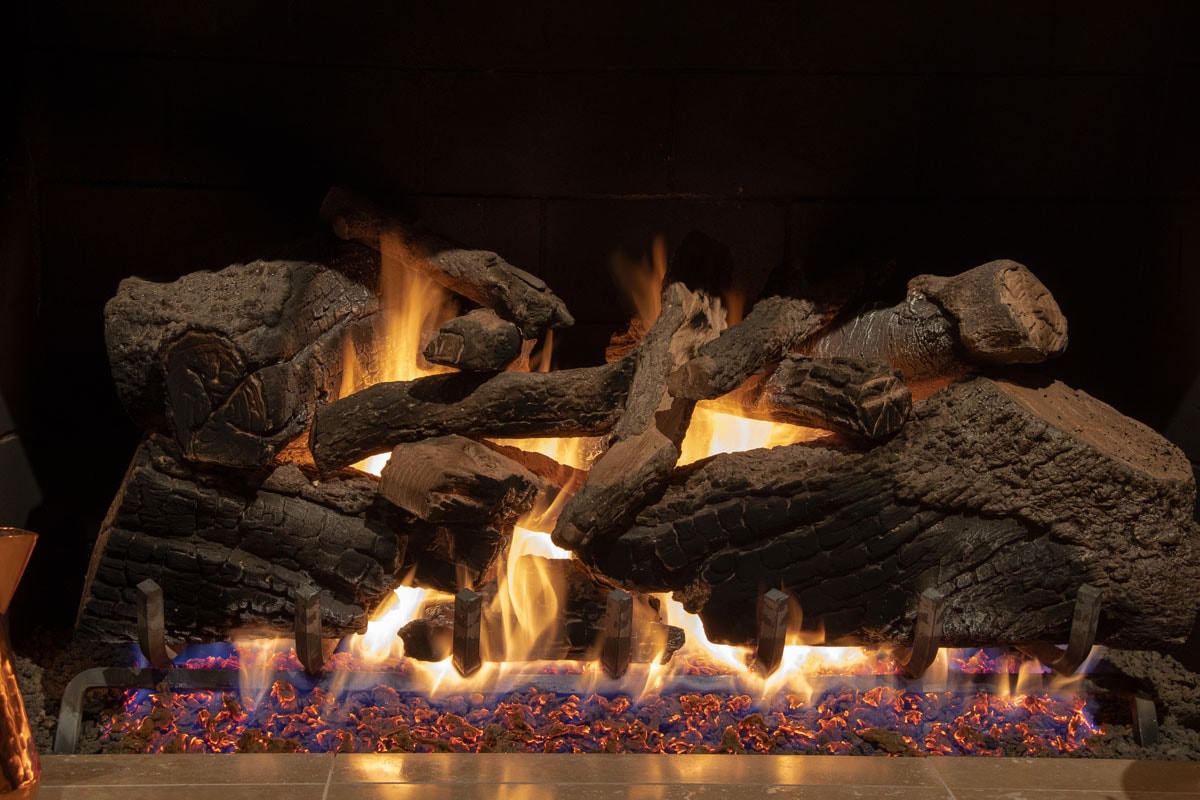
If you want your fireplace to have a more rustic and traditional feel, logs, coals, and stones made of heat-resistant materials such as glass and ceramics are available.
You might think that heating food in your gas fireplace or roasting marshmallows and hotdogs over a bonfire and recreating the experience at home is a smart idea.This is not the case!
Food should never be heated over a gas fireplace since the gas is chemically hazardous, and you don't want to eat those chemicals. Apart from that, grease will build up on your fireplace, causing venting issues.
All of your appliances serve a certain purpose and perform a specific function, and your gas fireplaces do not burn anything other than gas.
What kind of logs do you need for a gas fireplace?
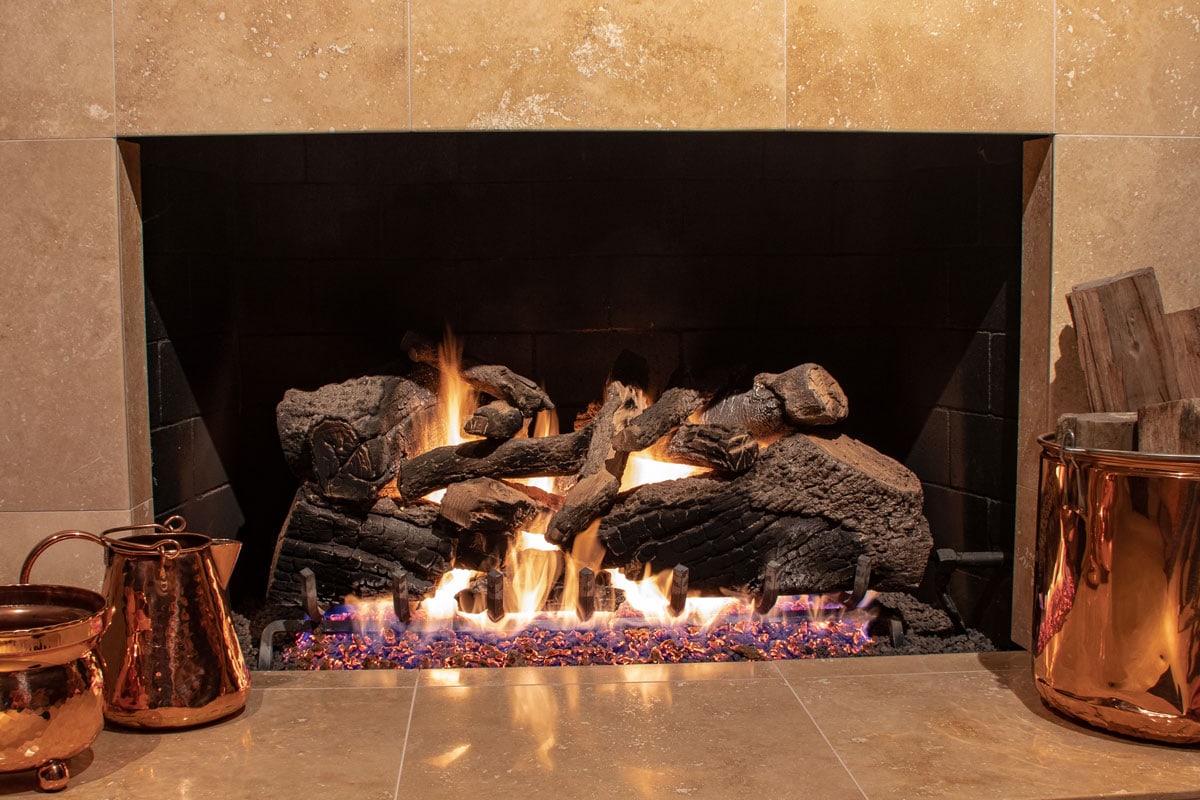
Although you can't burn firewood in a gas fireplace, there are other options if you want to keep the look of a conventional fireplace. There are log sets on the market that have a gas burner incorporated within a stack of ceramic logs.
If logs aren't your thing, there are also tempered glass beds, glass stones, and ceramic coal lumps to consider. Any of these options will allow you to attain your chosen style without endangering your home or yourself.
In Conclusion
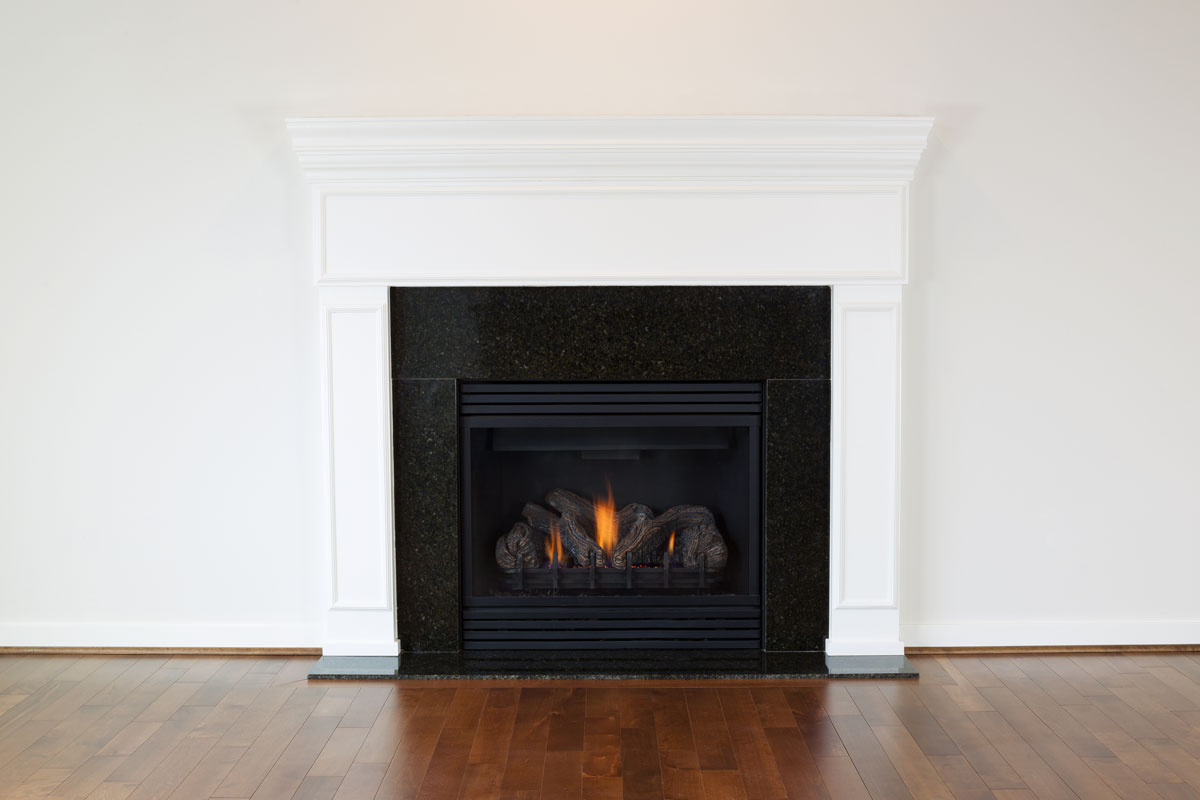
If you have a gas fireplace, specify whether it is a gas starter fireplace prior to burning anything inside. A typically gas fireplace is not intended to burn wood - and resulting damage or soot buildup could pose safety risks for you and your home. Enjoy the fireplace's warmth and aesthetic appeal by using it properly!
Interested in more fireplace tips? Check out our related articles:
